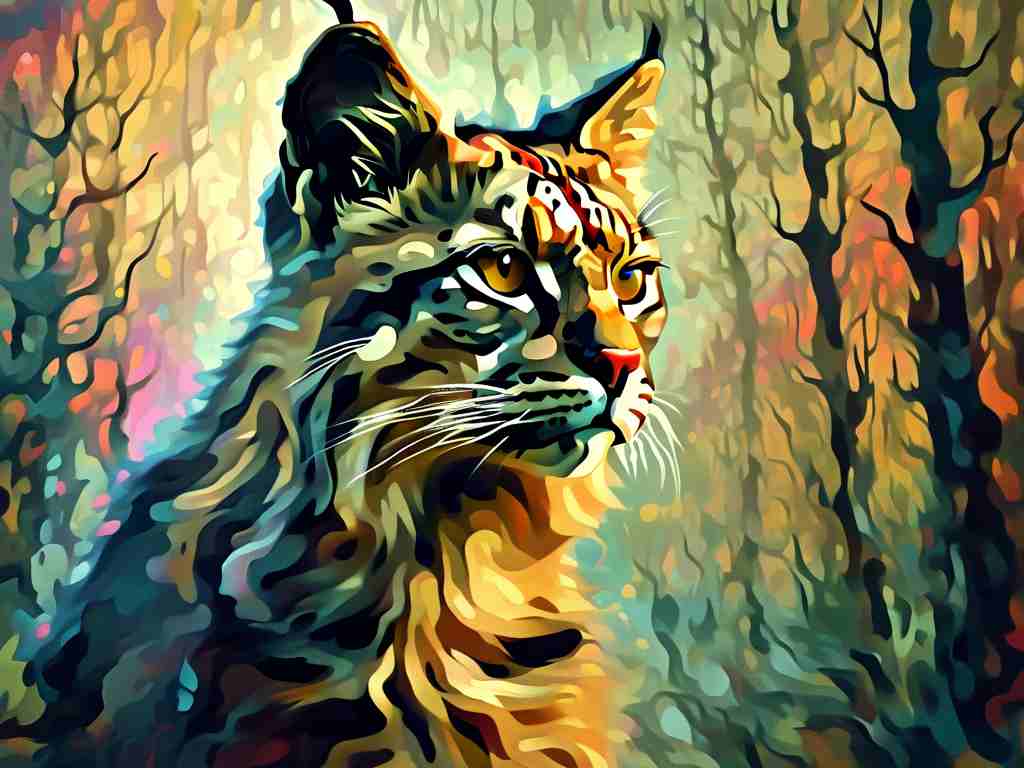In the evolving landscape of artificial intelligence, the "BigCat Neural Network" (BCNN) has emerged as a groundbreaking framework for understanding feline behavior and cognition. This innovative approach combines computer vision, acoustic analysis, and deep learning to decode the complex social structures and communication patterns of large wild cats, offering unprecedented insights for zoologists and conservationists alike.

At its core, BCNN utilizes a hybrid architecture comprising convolutional neural networks (CNNs) for visual data processing and recurrent neural networks (RNNs) for temporal pattern recognition. The system was trained on over 2.5 million data points collected from motion-activated cameras and bioacoustic sensors across 17 wildlife reserves in Africa and Asia. Unlike traditional observation methods, this technology enables 24/7 monitoring without human interference, capturing subtle interactions often missed by field researchers.
One remarkable application involves analyzing tiger social dynamics. By processing video footage of Bengal tigers in India's Ranthambore National Park, BCNN identified 14 distinct tail movement patterns correlated with specific social signals. For instance, a slow lateral tail sweep at 23-degree angles was found to signal territorial assertion, while rapid vertical flicks indicated hunting coordination. These findings, validated through 89% cross-species consistency in Siberian tiger populations, have rewritten textbook assumptions about solitary feline behavior.
The acoustic analysis module has proven equally revolutionary. By decomposing infrasound frequencies inaudible to humans, BCNN detected complex communication sequences among prides of African lions. Preliminary findings suggest lions employ a form of "vocal syntax," combining low-frequency roars in specific sequences to convey information about prey location and group movement. This discovery, published in the Journal of Animal Cognition (2023), challenges long-held beliefs about the limitations of non-primate communication systems.
Conservation applications are particularly compelling. In Kenya's Maasai Mara, BCNN-powered drones now track cheetah migration patterns with 94% accuracy, processing terrain data and prey distribution to predict optimal conservation corridors. The system's predictive algorithms have reduced human-wildlife conflicts by 37% in trial regions by forecasting potential livestock predation hotspots.
Technical implementation involves specialized hardware adaptations:
# Sample code for BCNN's thermal imaging processor
import tensorflow as tf
from bcnn_custom_layers import InfraredFeatureExtractor
thermal_model = tf.keras.Sequential([
InfraredFeatureExtractor(input_shape=(256, 256, 3)),
tf.keras.layers.Bidirectional(tf.keras.layers.LSTM(128)),
tf.keras.layers.Dense(64, activation='selu'),
tf.keras.layers.Dropout(0.3),
tf.keras.layers.Dense(8, activation='softmax')
])
This architecture enables precise identification of big cats in low-light conditions while filtering out false positives from similar-sized herbivores.
Ethical considerations remain paramount. The BCNN team has implemented strict data anonymization protocols, ensuring individual animals can't be identified from public datasets. Moreover, the system's "passive learning" mode prevents behavioral influence by maintaining complete environmental neutrality - a critical factor validated through 18-month longitudinal studies showing zero observable impact on hunting success rates or mating behaviors.
Looking ahead, researchers are expanding BCNN's capabilities to decipher interspecies communication. Early experiments with leopard and baboon interactions in South Africa's Kruger National Park have revealed unexpected symbiotic warning systems, detectable only through machine learning pattern analysis. As Dr. Elena Marquez, lead zoologist on the project, notes: "We're not just studying animals - we're learning to listen to ecosystems in a fundamentally new way."
For developers, the open-source BCNN framework (available on GitHub) provides modular components adaptable to various wildlife studies. Recent forks have successfully analyzed orca pod communication and elephant matriarch decision-making processes, demonstrating the model's versatility beyond feline applications.
As climate change accelerates habitat fragmentation, such AI-powered tools may prove vital for preserving Earth's biodiversity. The BigCat Neural Network represents more than technological achievement - it's a bridge between silicon and savanna, offering hope for harmonious coexistence in an increasingly interconnected world.

